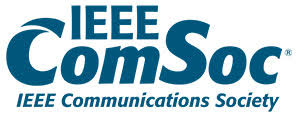Heterogeneous ultra-dense networks constitute an enabling architecture for achieving the disruptive capabilities that next-generation networks are expected to provide. Modeling, simulating, analyzing and optimizing such networks is, however, a non-trivial problem. This is due to the large number of access points that are expected to be deployed and to their dissimilar characteristics, e.g., deployment density, transmit power, medium access technology, etc. Several attempts have been made for modeling, simulating and optimizing these networks. No suitable universal approach and methodology, however, have been found so far. The methods used in the past for networks modeling and analysis, in fact, have been proved to be inappropriate. Consider, for example, the case of heterogeneous multi-tier cellular networks. The widespread adopted hexagonal grid-based model is not sufficiently scalable and flexible for taking the ultra-dense and irregular deployments of emerging cellular topologies into account. As another example, the Internet of Things (IoT) paradigm requires both cellular and non-cellular, mesh-like models, which again do not obey the standard assumptions. Motivated by these considerations, a new Special Interest Group (SIG) on H-UDN appears to be a timely and promising initiative. This SIG would focus on fundamental aspects of H-UDN, but would maintain a view on applications including IoT, 5G, and Wi-Fi (e.g., IEEE 802.11ax).
The objectives of the Special Interest Group on H-UDN are the following:
- To develop new approaches for modeling and simulating heterogeneous ultra-dense networks
- To investigate the suitability of abstraction models based on point processes theory, random graphs, and on stochastic geometry tools for modeling such networks
- To conduct fundamental research on point processes, random graphs, and stochastic geometry theory for application use in modeling to emerging heterogeneous ultra-dense networks application scenarios
- To validate the accuracy of the proposed modeling approaches through experimental activities
- To develop mathematical frameworks for system-level performance evaluation and optimization
- To investigate the suitability of the new modeling approaches for fast and efficient system-level simulations
- To identify application scenarios where these approaches can be exploited, and use these applications to further refine the models
- To investigate the suitability of the proposed approaches for analyzing and optimizing emerging access technologies and communication protocols
- To create a cross-disciplinary environment fostering collaboration among experts in mathematics, applied probability, and communication engineering
- To promote activities in the field of H-UDN modeling and applications, e.g., through the organization of Special Sessions, Workshops, etc. at IEEE conferences.
Coordinators:
– Marco Di Renzo (CNRS/SUPELEC)
– Justin Coon (University of Oxford)

